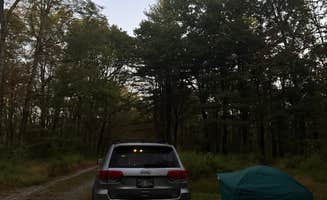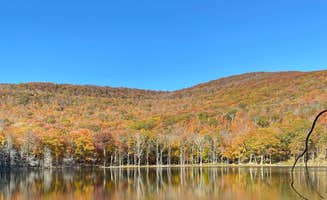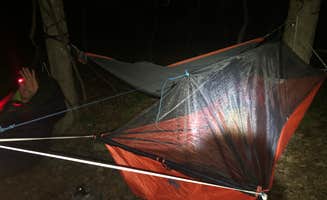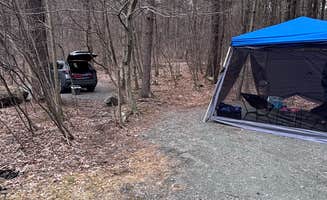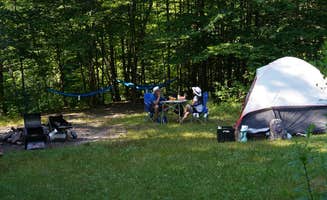Primitive camping options around Ancramdale, New York extend beyond the immediate area into the surrounding Taconic Mountain region and western Catskills. The terrain varies from densely forested ridges to valleys with small streams and ponds, with elevations ranging from 700 to 2,200 feet. Winter temperatures can drop below 0°F while summer nights remain cool, often necessitating proper cold-weather gear even during summer camping trips.
What to do
Hike to mountaintop views: From Jug End Dispersed on the Appalachian Trail, visitors can access ridge trails with views of three states. "Great spot, I have section hiked the majority of east coast AT and this is in my top 10 spots to stay at," notes Luke A.
Fish in nearby streams: Primitive sites near Allaben Primitive Campsites offer access to trout fishing. "Trails to the fishing access across the road," reports Breanne H., who appreciated the proximity to water sources.
Winter camping: Some dispersed sites remain accessible year-round for experienced winter campers. Sites at higher elevations require snowshoes or cross-country skis during winter months, with temperatures regularly dropping below freezing from December through March.
What campers like
Isolation from crowds: The dispersed sites at Hemlock Ridge MUA appeal to those seeking solitude. Dawn M. notes, "If you like dispersed camping, like me—this place is good. There are absolutely no amenities whatsoever & barely even a signal here, but it's quiet & off the beaten path."
Lakeside camping spots: Echo Lake provides waterfront primitive camping with scenic views. James A. reports, "We camped on the hill with a beautiful view of the whole lake and breeze," highlighting the natural ventilation that helps reduce insects.
Accessible backcountry: Many primitive sites require only short hikes from parking areas. "This campground was my first backpacking trip and it was perfect!" shares Kate about Echo Lake, noting its beginner-friendly terrain despite the backcountry setting.
What you should know
Limited parking capacity: Most dispersed camping areas have small parking lots that fill quickly on weekends. Hemlock Ridge "only holds about 4-5 cars, 6 if you park real tight," according to Dawn M., making weekday visits preferable during peak season.
Bug protection essential: Insects are prevalent at most sites, particularly near water. "Bugs are relentless," warns Cory D. about Taconic Hereford Multiple Use Park, recommending permethrin-treated clothing and enclosed shelters.
Swampy conditions: Low-lying areas retain moisture after rain. "It can get swampy near the edge of the lake so you may want to bring bug spray," advises a camper about Echo Lake, suggesting site selection on slightly elevated ground.
Tips for camping with families
Bear safety precautions: Families should use provided bear boxes where available or bring bear-resistant containers. "Bear boxes available," notes Luke A. at Sage's Revine, which helps simplify food storage for family groups.
Beginner-friendly options: For families new to rustic camping near Ancramdale, New York, select sites with easy access. "This spot is easy to find and access, and had decent ATT service," Tim M. mentions about Taconic Hereford, which maintains cellular connectivity for safety.
Water availability planning: No potable water exists at most sites, requiring families to carry sufficient water or bring filtration systems. Most sites require 1-2 gallons per person per day during warm weather, with extra needed for cooking and washing.
Tips from RVers
Size restrictions: Most dispersed camping areas near Ancramdale cannot accommodate large RVs. "The road is narrow with not much turnaround room, I wouldn't recommend for trailers or RVs," cautions Tim M. about Taconic Hereford Multiple Use Park.
Alternative established campgrounds: RVers seeking rustic experiences should consider established campgrounds within 30-45 minutes of Ancramdale. Several state parks in the region offer primitive camping areas with wider access roads suitable for smaller recreational vehicles.
Seasonal road conditions: Unpaved access roads become difficult to navigate during spring thaw (typically March-April) and after heavy rains. Many forest roads remain unplowed in winter, requiring vehicle preparation appropriate to conditions.


